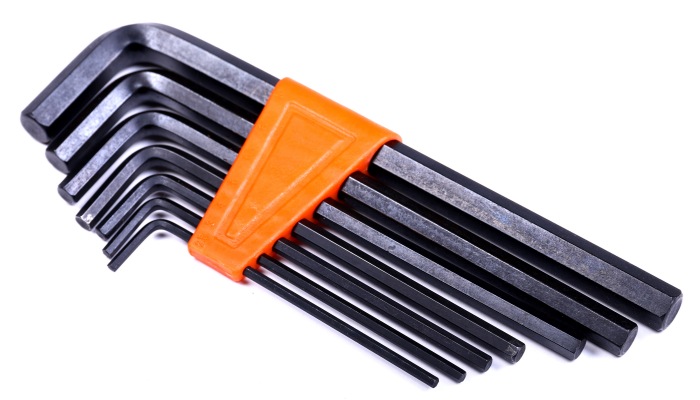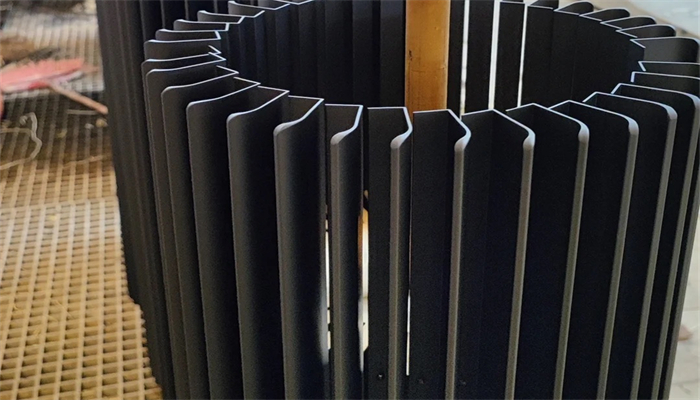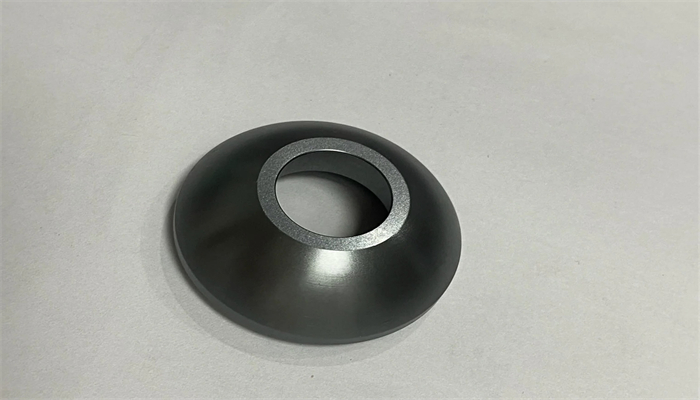
The machinist will take appropriate surface finish on the processed metal parts according to the design requirements to meet different manufacturing needs.
Most surface treatments combine the function of improving the aesthetics and friction of a part or product surface. However, this will cause dimensional changes in the component, which is not conducive to the fit and use of the element in the application.
Among the many surface treatments, the black oxide coating can solve the problem of dimensional change friendly. Next, Tirapid will introduce the application field, working principle, classification, and other information about black oxide coating. And answer the questions that may arise in the black oxide coating.
What Is Black Oxide Coating?
The black oxide coating is a process that uses chemical solutions to achieve surface treatment. Among other things, it uses an alkaline chemical solution of sodium hydroxide (NaOH) and sodium nitrite (NaNO2) to facilitate the formation of surface treatments.
Because the parts treated with black oxide coating are black, it is also called blackening, blackening treatment, or black passivation.
The black coating that appears during surface treatment is the product of a chemical reaction, commonly known as magnetite. Often, mechanics will choose a black oxide finish for aesthetics and protection in specific applications.
The Process Flow of Black Oxidation Treatment
Compared with other processes, the blackening process is relatively simple. So how is the black oxide coating process done? The following are the processing steps that Tirapid introduces for you:
1. Clean the Parts Surface
Machining marks and stains may remain on the surface of precision parts. For the coating to better adhere to the surface of the workpiece, surface cleaning is necessary.
2 Acidify the Parts Surface
This is a further step to remove oxidized impurities (other than rust) besides stains. Often an acidic solution such as citric or phosphoric acid is used for deeper cleaning.
3. Rinse with Water
After the cleaning and acidizing steps, parts can be rinsed with distilled water. This step is mainly for the part to have a clean surface and to ensure the smooth adhesion of the coating.
4. Soak in a Blackening Bath
Usually, the machinist will perform the correct soaking method on the metal parts according to the selection of the appropriate chemical solution. During this time, the coating reaction of the parts is also promoted by the correct temperature.
5. Post-Processing
After the metal parts are finished with black coating, in order to ensure the anti-corrosion effect of rust-prone parts. Depending on the type of part, the machinist will use an oiling procedure. (Some parts can use wax)
The above steps are the basic steps of black conversion coating, and some steps can be repeated. For example, the cleaning of stains on the surface of parts plays a key role in the surface treatment of parts. Overall, the process of black conversion coating is simpler than other surface treatments. But every step of the process is related to the final black coating effect.
Classifications of Black Oxide Coatings
The black conversion coating process is inseparable from the role of temperature in it. They have different effects through different temperatures, which are hot black conversion coating treatment, medium temperature black conversion coating, and room temperature black conversion coating. Tirapid will introduce its features, advantages, and disadvantages to you next.
Thermal Black Oxide Coating
The process of the thermal black conversion coating allows the temperature to be set between 285 and 315°C. Through the form of high temperatures, metal parts can quickly reach the conversion conditions required for chemical reactions.
When a black surface substance is produced on the surface of the metal part, it means that the process is achieving the desired effect in the form of a chemical reaction. The black surface material is a black iron oxide compound of magnetite (Fe3O4).
Pros
In addition to providing a general oxide layer to protect metal parts from moisture corrosion, the thermal black conversion coating is also wear-resistant and aesthetically pleasing.
Cons
Compared with cool black conversion coating, the ability of hot black conversion coating to deal with non-ferrous metals (such as copper or stainless steel, etc.) is lacking. When thermal black conversion coatings are used to treat metal parts, more energy is consumed than electroplating or anodizing.
Room Temperature Black Oxide Coating
Room temperature black conversion coatings are in the temperature range of 15 to 30°C. Strictly speaking, it is not a chemical reaction but uses a deposition method to deposit copper selenide on the surface of metal parts.
Pros
It can achieve the purpose of blackening without heating, so it has more advantages than thermal blackening oxide coating in terms of energy saving. Unlike thermal black conversion coatings, room-temperature blackening can be applied to a wider range of metals. It includes ferrous and non-ferrous metals such as stainless steel and aluminum.
Cons
While room-temperature black conversion coatings offer corrosion and wear resistance, they may not be comparable to thermal black conversion coatings in harsh environments.
Medium Temperature Black Oxide Coating
compare the above two temperatures, the medium temperature balance, and between the two. Rather, it can have the advantage of not producing toxic smoke gases during the reaction.
In general, no matter what temperature you choose to carry out black conversion coating, you need to refer to professional manufacturing suggestions. You can choose the correct temperature for black conversion coating for your metal parts from the advantages and disadvantages above. If you have doubts about the choice, welcome to consult Tirapid experts online.

The Factors to Consider for Black Oxide Coating
Proper use of black conversion coating makes metal parts meet the purpose and standard of manufacturing. And the factors to consider can help you identify whether it is right for your project. The following points are the factors to be considered when carrying out the black conversion coating process.
Exterior Color
The applied surface of the black conversion coating is mainly black or gray in color, and its color is very limited. Therefore, when choosing this table treatment, you should consider whether it is your ideal surface color.
Application Environment
The application environment will affect the effect of black conversion coating on the protection or beautification of metal parts.
For example, in an environment that requires long-term radiation, fading and discoloration of parts may occur. Therefore, when choosing the surface treatment process for metal parts, please confirm its application environment and choose the most suitable process.
Application Period
The surface protection capabilities of the black conversion coating can be enhanced through the use of sealants.
Under normal circumstances, it can improve the performance of corrosion resistance and high-temperature discoloration resistance of the surface of metal parts.
This is conducive to long-term resistance to the challenges of harsh application environments, making it durable and long-lasting.
In addition, there are cost estimates for processing, conditions such as the required surface finish, and quality inspections. If you are worried that your consideration is not thoughtful enough, welcome to submit your project idea to Tirapid. We are able to provide you with a hassle-free solution for surface treatment, taking everything into consideration for your project.
Pitfalls&Solution
Black conversion coating is often an ideal choice for small and medium-sized enterprises due to its high-cost performance and aesthetic advantages. However, related problems are also encountered when using black conversion coatings. Tirapid lists common problems and solutions for black conversion coatings below.
Coating Discontinuity
This is a common problem in oxide coatings, mainly due to inadequate cleaning and activation of the surface of the part. Residual stains and oxides from lack of proper treatment can hinder the formation of a coating on the surface.
Coating discontinuities can often be corrected by further deep cleaning of the part.
Particles appear on the surface
The appearance of particles on the surface of the oxide coating may be caused by factors such as cleaning work, temperature, and long soaking time.
Therefore, to solve this problem, it is necessary to check and adjust the above parameters and ensure that the processing is correct through regular inspections.
White Dots or Streaks
When the black conversion coating is not successfully activated by the contaminants on the surface, white spots or streaks will appear.
This can be addressed through improved methods and procedures for surface cleaning and activation. Once the contamination has been completely eliminated, it is ensured that the problem of white spots or streaks will not recur.

Performance Tests of Black Oxidation
Necessary testing ensures that black oxide-coated components will perform as required for the application. The following are common test items in black oxide coating treatment:
Relative Humidity Test
This test enables the evaluation of the humidity and moisture resistance of black oxide-coated parts. This is critical for parts to be conditioned to be exposed to moisture.
Salt Spray Test
Mechanics exposing metal parts to salt spray environments can create conditions for corrosion. According to the standard test time, the corrosion resistance of black oxide coating can be evaluated. This test helps determine a coating’s ability to resist corrosion under harsh conditions.
Testing can verify whether the metal parts meet the expected standards. You can get reliable parts for your projects based on the above tests.
Pros and Cons of Black Oxide Coating
In terms of the ability to treat the surface, the black oxide coating has beautifying conditions that can be achieved by general processes. It also has other advantages. Of course, the black oxide coating also has its disadvantages. The following is an introduction to the advantages and disadvantages of the black oxide coating for you:
Pros
- Comfortable look and feel. The low-key color vision of black reduces the dazzling feeling of shiny metal parts.
- Multifunctional surface. It achieves a more ideal surface effect for parts that need to meet the aesthetic surface and meets different application requirements.
- Cost-effective. It becomes an affordable surface finish for many businesses and does not require expensive sealants.
- Dimensions unchanged. It can provide a protective layer for metal parts with a thickness of only one micron without affecting the actual application effect.
- Non-destructive surface. Proper use of the black oxidation treatment process can prevent coating chipping and shelling on the surface of parts.
- Efficient processing. The surface treatment of the black conversion coating is a simple treatment process, which can quickly deal with surface problems. Manufacturers don’t need to worry about surface treatments extending lead times for manufactured parts.
- Long life. The surface protection of the black conversion coating improves the friction and moisture resistance of the applied parts.
- Easy soldering. Its coating has a wetting effect, making it possible to find good soldering points for soldering sockets as well.
- Batch processing. Its surface treatment process is simple and fast, and it has the ability to process a large number of parts at the same time. Therefore, in batch operations, it can play an important role.
Cons
- In an environment with strong ultraviolet rays, the use of black conversion coating may not be able to withstand long-term radiation. Fading or discoloration may occur in later use.
- Colors are limited. The black conversion coating can bring advantages to precision components despite the size. But in the choice of color, other crafts may be a better choice.
- Weak wear resistance. Although the black conversion coating has the ability to resist friction, it may be inferior to electroplating compared with other surface treatments.
- LIMITED USE. It is a simple treatment process, but it still needs to be operated by professionals. DIY oxidation operations may cause operational errors.
The above are the advantages and disadvantages of black conversion coating, and analyzing the information can bring you the best surface treatment method for your project. Tirapid can support your parts with versatile types of surface treatment, please contact us online for information.

Materials for Black Oxide Coating
Materials commonly coated with black oxide include:
- Aluminum
- Carbon Steel
- Alloy Steel
- Tool Steel
- Cast Iron
- Stainless Steel
- Mineral Powder
- Copper
- Silver Solder
- Zinc
Although there are many different grades of materials that can be applied to black oxide coatings. But Tirapid experts suggest that when applying black oxide coating, it is necessary to judge whether the surface process is suitable according to the type. This is conducive to the long-term use of the parts in the future.
Choose a Surface Finishing Specialist
On the Tirapid CNC machining manufacturer, we provide one-stop metal parts processing services. Throughout your project, professional mechanics are ready to analyze the different surface conditions for you. Such as anodizing, sandblasting, electroplating, polishing, painting, brushing, labeling, deburring, etc.
And, of course, the black conversion coating mentioned in this blog post. Please choose Tirapid to carry out the processing and watch processing of different projects for you. We look forward to providing you with the best solution through professional technology and service, please contact us online!
Conclusion
In general, black conversion coatings can meet general surface requirements in many ways. Not only can it bring a generous black visual experience to the metal parts, but it can also improve the durability of the parts.
However, when choosing the appropriate table treatment, it should be combined with actual needs and suggestions. Please don’t miss Tirapid’s professional manufacturer, the surface treatment we provide can meet your different application needs.
The above are some of the application fields and parts that Tirapid showed you. There are many examples in other industries because of the surface capabilities of black conversion coatings that combine general application needs. If you have processing needs in this area, we experts can provide you with corresponding services.
FAQs
1. Is the black oxide coating magnetic?
Tirapid’s answer is yes. The main component of the black conversion coating is a substance called magnetite.
2. Is black oxide coating suitable for my project?
Different projects have different requirements in various aspects, and your needs will also affect the final selection process.
You can review the factors that may influence your choice or suitability in this blog post. You can also consult with experienced Tirapid experts to provide you with information analysis services.
3. What can I use instead of black oxide coating?
Compared with the toxic gas emitted by the black conversion coating when processing parts, the anodizing process is safer. But in terms of cost and size, it is more cost-effective than anodizing.
There are different advantages between the two. Therefore, your actual needs should be considered when choosing. Make sure that the surface process you choose can meet your processing needs.


